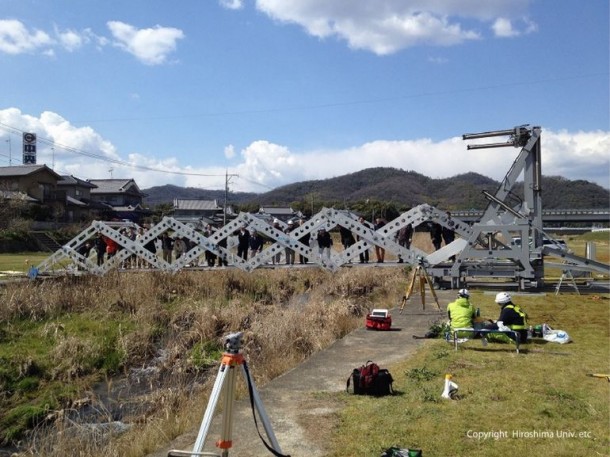Natural disaster survivors have to face the biggest challenge once the disaster is over in the form of surviving till aid reaches them. Why so? Because usually these natural outbursts take out the bridges and thus leave the survivors stranded. Portable bridges are used for such times, however, they can still use a lot of improvement. That is what led researchers from Hiroshima University to create a new model of portable bridges that is claimed to be “the world’s fastest, largest, strongest, and lightest expanding temporary bridge.”
It has been developed by a team that is being led by Dr. Ichiro Ario and is known as Mobile Bridge Version 4.0 (MB4.0). The design has been inspired by the art of origami. It can be contracted like an accordion when it isn’t being used and can be towed using a trailer. Once it has been transported to the required destination, it then makes use of a scissor-like action to fold out thus sliding sections of decking out end-to-end and provides a platform for vehicles to use.
The arrival time and when it becomes operational is about an hour. No foundation construction or cranes are needed, thus it automatically becomes far more economical as compared to other options. The actual time it takes to expand across the river is about 5 minutes and is capable of catering to vehicles as soon as it’s spread out.
A prototype was recently demonstrated at a symposium of the Japan Society of Civil Engineers on 23rd June, 2015. It was successfully set up and used by vehicles to cross the Hongo River in Fukuyama City. As of now, Ario and his team are busy in further developing the technology and are hopeful that it can be used to extend lifespan of older bridges that require structural support.


